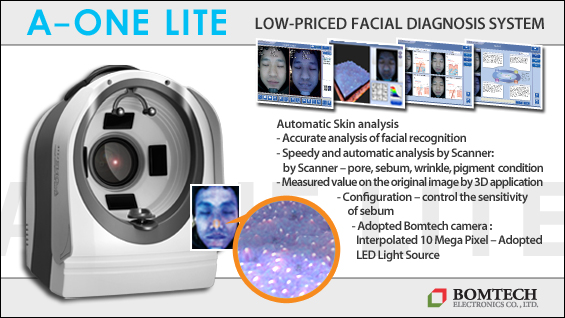Negishi et al.36 proposed that latent melasma that was not visible with the unaided eye might have exacerbated after IPL therapy. They called this latent melasma ‘very subtle epidermal melasma’ (VSEM) and found that about 30% of all women without visible melasma had VSEM in ultraviolet (UV) photography.36
In other words, subtle melasma can be often present in patients without visible lesions and can develop into noticeable melasma after aggressive IPL treatment. As IPL therapy was too often followed by development of visible hyperpigmentation,36,37 or worsening of existing melasma lesions,38 the notion that IPL is risky in patients with melasma began to spread widely among dermatologists.
We are of belief that an appropriate use of IPL can be very effective in the treatment of melasma. Melasma may worsen after IPL because improper parameters, which are more suitable for treating solar lentigines or freckles, are used. Excessive heating of tissues can worsen melasma. In fact, dermatologists who frequently utilize IPL in melasma use lower fluences than those used in solar lentigines or freckles.
This is similar to the difference between high-fluence 1,064 nm QS Nd:YAG Laser and low-fluence Laser toning. However, unlike Laser toning, IPL used in melasma does not target destruction of melanin pigments or melanosomes. IPL has a longer pulse width than that of the QS Nd:YAG Laser and delivers thermal energy to the entire epidermis through melanin pigments and melanosomes to increase epidermal turn-over and improve degenerated skin environments.
Therefore, the mechanism of action differs between IPL and Laser toning, which allows them to complement each other. As most patients with melasma also present other pigmented lesions, combining IPL with Laser toning can bring superior and faster improvement than using Laser toning alone. For these reasons, we prefer combining Laser toning with IPL.
In agreement with our experience, recent studies have reported that low-fluence IPL therapy is safe and effective,39 and combining IPL and Laser toning can bring excellent outcomes and rapid improvement.40-42 We expect fractionated IPL will be soon introduced for treatment of melasma,43 and additional research should be performed to support its use.
[Advertisement] A-One LITE(Facial Diagnosys System) – Manufacturer: BOMTECH(www.bomtech.net)
4. Fractional Lasers
The concept of fractional photothermolysis (FP) was first introduced by Manstein D et al.44` in their paper published in Lasers in Surgery and Medicine in 2004. Early fractional Lasers were developed to reduce the complications of traditional Laser skin resurfacing. In the early days, the key indication of FP was skin rejuvenation of photodamaged skin and rhytides.
However, some studies reported of successfully treating melasma using a 1,550 nm fractional erbium-doped Laser.45,46 Afterwards, generation and excretion of micro epidermal necrotic debris (MEND), and removal of melanin in this process were clarified,47,48 which served as an underlying principle of fractional Laser therapy in melasma. Favorable reports of ablative and nonablative fractional Lasers in melamsa followed,49-52 and review papers described that fractional Lasers were effective in treatment of melasma.53-55
However, Korean dermatologists who applied fractional Lasers in melasma came to experience much more side effects including PIH and rebound pigmentation than those reported in previous literature. When the energy and density were lowered to reduce side effects, the actual efficacy was much lower than what was reported in clinical studies.
Many dermatologists started to be skeptical of the benefits of FP in melasma. By the late 2000s, skepticism regarding the effects of fractional Laser in melasma had grown and many studies reported of a high risk of side effects and low efficacy.2,56-58
These negative results were particularly pronounced in studies involving Asian patients. The discrepancy in the results between Asians and Caucasians may stem from racial and genetic differences. Lee et al.56 reported that melasma initially improved in the early phase of the treatment but worsened starting with the third treatment.
They raised questions about the long-term results. Nonspecific thermal stimulation is inevitable to remove melanin through MEND and inflammation takes place as a reaction to the excess heat. Therefore, FP may bring temporary improvement of melasma but is likely to worsen melasma through inflammatory response in the long run.
Controversy still exists over the use of fractional Laser in treatment of melasma. We believe that fractional Lasers can play a significant role if they are combined with Laser toning. As mentioned earlier, there is a high probability of low effect and high risk of side effects in the treatment conducted on the basis of the old concept that FP can be effective in melasma by removing melanin pigments through MEND.
However, when combined with Laser toning for the purpose of improving the dermal environment, fractional Lasers may bring excellent long-term benefits.
As for histopathology of melasma, basic characteristics of the condition include increased melanin in all epidermal layers, basal hyperpigmentation, solar elastosis, and epidermal flattening.59-61 Melanocytes in the melasma lesion are larger and have more developed dendrites compared to those in the normal tissues.59-61 The basement membrane is also damaged, presenting pendulous melanocytes that protrude into the dermis.62,63
Along with these findings, other noticeable histochemical characteristics include increased inflammatory cytokines, elevated levels of melanogenesis-associated proteins, and signs suggesting UV-induced skin damage. Dermal inflammation caused by accumulated UV irradiation stimulates fibroblasts which increase dermal stem cell factors and various cytokines.64 These seem to lead to increased melanogenesis.64
UV irradiation also activates matrix metalloproteinases which results in the damaged basement membrane.63 For these reasons, it has been proposed that the treatment goal of FP in melasma should be the improvement of the altered dermal environment to rectify the aberrant signals between dermis and epidermis.
Therefore, Laser toning which is effective in removing melanin, and fractional Laser which is effective in improving the dermal environment can be combined to enhance the therapeutic effect in melasma. As the benefits and risks can differ greatly across patients and lesion types, parameters should be delicately adjusted to maximize the effect and minimize complications.
-To be continued
References
33. Moreno Arias GA, Ferrando J. Intense pulsed light for melanocytic lesions. Dermatol Surg 2001;27:397-400.
34. Wang CC, Hui CY, Sue YM, Wong WR, Hong HS. Intense pulsed light for the treatment of refractory melasma in Asian persons. Dermatol Surg 2004;30:1196-200.
35. Li YH, Chen JZ, Wei HC, Wu Y, Liu M, Xu YY, et al. Efficacy and safety of intense pulsed light in treatment of melasma in Chinese patients. Dermatol Surg 2008;34:693-700.
36. Negishi K, Kushikata N, Tezuka Y, Takeuchi K, Miyamoto E, Wakamatsu S. Study of the incidence and nature of "very subtle epidermal melasma" in relation to intense pulsed light treatment. Dermatol Surg 2004;30:881-6.
37. Fang L, Gold MH, Huang L. Melasma-like hyperpigmentation induced by intense pulsed light treatment in Chinese individuals. J Cosmet Laser Ther 2014;16:296-302.
38. Chung JY, Choi M, Lee JH, Cho S. Pulse in pulse intense pulsed light for melasma treatment: a pilot study. Dermatol Surg 2014;40:162-8.
39. Bae MI, Park JM, Jeong KH, Lee MH, Shin MK. Effectiveness of low-fluence and short-pulse intense pulsed light in the treatment of melasma: A randomized study. J Cosmet Laser Ther 2015;17:292-5.
40. Na SY, Cho S, Lee JH. Intense Pulsed Light and Low-Fluence Q-Switched Nd:YAG Laser Treatment in Melasma Patients. Ann Dermatol 2012;24:267-73.
41. Vachiramon V, Sirithanabadeekul P, Sahawatwong S. Low-fluence Q-switched Nd: YAG 1064-nm Laser and intense pulsed light for the treatment of melasma. J Eur Acad Dermatol Venereol 2015;29:1339-46.
42. Na SY, Cho S, Lee JH. Better clinical results with long term benefits in melasma patients. J Dermatolog Treat 2013;24:112-8.
43. Yun WJ, Lee SM, Han JS, Lee SH, Chang SY, Haw S, et al. A prospective, split-face, randomized study of the efficacy and safety of a novel fractionated intense pulsed light treatment for melasma in Asians. J Cosmet Laser Ther 2015;17:259-66.
44. Manstein D, Herron GS, Sink RK, Tanner H, Anderson RR. Fractional photothermolysis: a new concept for cutaneous remodeling using microscopic patterns of thermal injury. Lasers Surg Med 2004;34:426-38.
45. Tannous ZS, Astner S. Utilizing fractional resurfacing in the treatment of therapy-resistant melasma. J Cosmet Laser Ther 2005;7:39-43.
46. Rokhsar CK, Fitzpatrick RE. The treatment of melasma with fractional photothermolysis: a pilot study. Dermatol Surg 2005;31:1645-50.
47. Laubach HJ, Tannous Z, Anderson RR, Manstein D. Skin responses to fractional photothermolysis. Lasers Surg Med 2006;38:142-9.
48. Hantash BM, Bedi VP, Sudireddy V, Struck SK, Herron GS, Chan KF. Laser-induced transepidermal elimination of dermal content by fractional photothermolysis. J Biomed Opt 2006;11:041115.
49. Goldberg DJ, Berlin AL, Phelps R. Histologic and ultrastructural analysis of melasma after fractional resurfacing. Lasers Surg Med 2008;40:134-8.
50. Trelles MA, Velez M, Gold MH. The treatment of melasma with topical creams alone, CO2 fractional ablative resurfacing alone, or a combination of the two: a comparative study. J Drugs Dermatol 2010;9:315-22.
51. Katz TM, Glaich AS, Goldberg LH, Firoz BF, Dai T, Friedman PM. Treatment of melasma using fractional photothermolysis: a report of eight cases with long-term follow-up. Dermatol Surg 2010;36:1273-80.
52. Neeley MR, Pearce FB, Collawn SS. Successful treatment of malar dermal melasma with a fractional ablative CO(2) Laser in a patient with type V skin. J Cosmet Laser Ther 2010;12:258-60.
53. Jih MH, Kimyai-Asadi A. Fractional photothermolysis: a review and update. Semin Cutan Med Surg 2008;27:63-71.
54. Tierney EP, Kouba DJ, Hanke CW. Review of fractional photothermolysis: treatment indications and efficacy. Dermatol Surg 2009;35:1445-61.
55. Narurkar VA. Nonablative fractional Laser resurfacing. Dermatol Clin 2009;27:473-8.
56. Lee HS, Won CH, Lee DH, An JS, Chang HW, Lee JH, et al. Treatment of melasma in Asian skin using a fractional 1,550-nm Laser: an open clinical study. Dermatol Surg 2009;35:1499-504.
57. Wind BS, Kroon MW, Meesters AA, Beek JF, van der Veen JP, Nieuweboer-Krobotova L, et al. Non-ablative 1,550 nm fractional Laser therapy versus triple topical therapy for the treatment of melasma: a randomized controlled split-face study. Lasers Surg Med 2010;42:607-12.
58. Karsai S, Fischer T, Pohl L, Schmitt L, Buhck H, Junger M, et al. Is non-ablative 1550-nm fractional photothermolysis an effective modality to treat melasma? Results from a prospective controlled single-blinded trial in 51 patients. J Eur Acad Dermatol Venereol 2012;26:470-6.
59. Kang WH, Yoon KH, Lee ES, Kim J, Lee KB, Yim H, et al. Melasma: histopathological characteristics in 56 Korean patients. Br J Dermatol 2002;146:228-37.
60. Grimes PE, Yamada N, Bhawan J. Light microscopic, immunohistochemical, and ultrastructural alterations in patients with melasma. Am J Dermatopathol 2005;27:96-101.
61. Miot LD, Miot HA, Polettini J, Silva MG, Marques ME. Morphologic changes and the expression of alpha-melanocyte stimulating hormone and melanocortin-1 receptor in melasma lesions: a comparative study. Am J Dermatopathol 2010;32:676-82.
62. Torres-Alvarez B, Mesa-Garza IG, Castanedo-Cazares JP, Fuentes-Ahumada C, Oros-Ovalle C, Navarrete-Solis J, et al. Histochemical and immunohistochemical study in melasma: evidence of damage in the basal membrane. Am J Dermatopathol 2011;33:291-5.
63. Lee DJ, Park KC, Ortonne JP, Kang HY. Pendulous melanocytes: a characteristic feature of melasma and how it may occur. Br J Dermatol 2012;166:684-6.






















